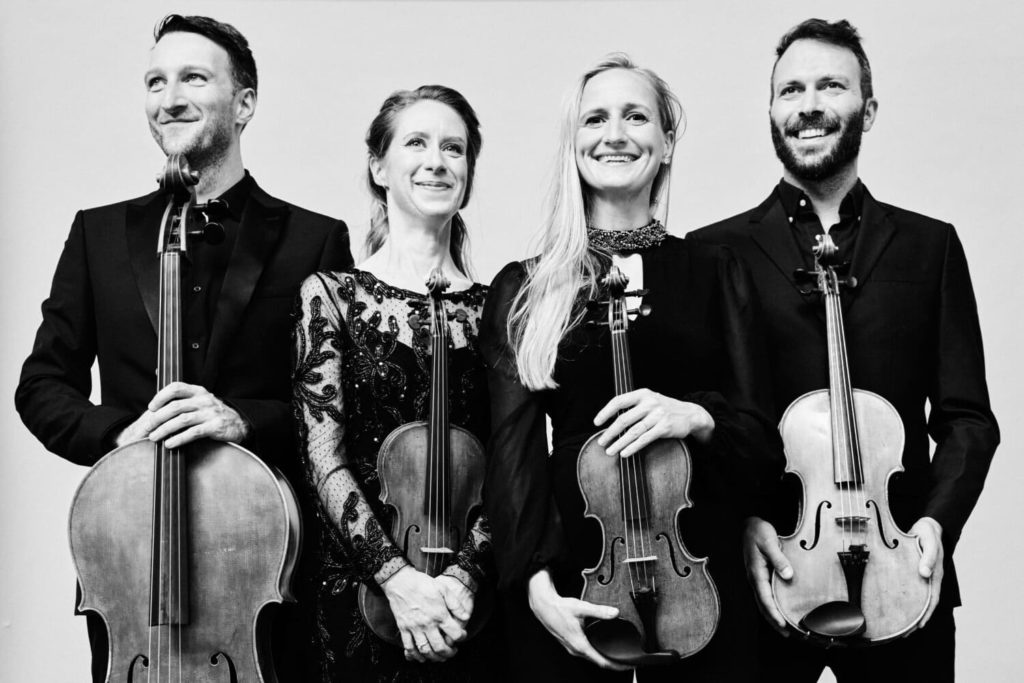
The Heath Quartet, British Music Society of York (BMS), Sir Jack Lyons Concert Hall, University of York, December 3
THE Heath Quartet last appeared in York exactly ten years ago. At that time, they were led by their founder, Oliver Heath. Then he decided to seek pastures new and Marije Johnston took his place.
What you would never guess from this performance is that that exchange took place a mere four months ago. Johnston’s pedigree as a chamber musician allowed her to slot seamlessly into place. Bear that in mind as you read on.
At first sight, the pairing of late Janáček and late Beethoven string quartets – played in that order – looks quirky, even fanciful. The works were written almost exactly 100 years apart, each within a year of the composer’s death. They formed the Heath Quartet’s sparkling, I dare even say memorable, programme for the BMS of York.
Janacek’s Second Quartet – known as ‘Intimate Letters’ and encapsulating the turbulent emotions of his more than 700 letters to Kamila Stösslová, his much younger muse in his final decade – has four movements but with constantly changing tempos in each.
The seven movements of Beethoven’s Op 131 in C sharp minor run into one another, making the work equally restless, if not more so. Near death they may have been, but each man was writing in the white heat of unbridled inspiration. The parallels are uncanny.
So the Janáček turned out to be a perfect intro into the Beethoven: they were men on the same kind of mission. The Heaths tuned into that immediately.
Apart from the cellist, who sat on a small plinth, the others stood to play, which allowed them freedom of movement. Johnston, playing second fiddle here, and viola player Gary Pomeroy took full advantage, swaying and bending ceaselessly. Sara Wolstenholme, leading, remained much calmer. But none of this affected their ensemble; they breathed, and played, as one.
The key player in the Janáček is the viola, who represents Kamila. Pomeroy did not disappoint. The work veers, sometimes wildly, between tension and lyricism and he skilfully spearheaded the latter.
Janáček’s yearnings welled up regularly, almost physically so in the slow second movement with palpitations and a devilish Ländler-style dance. The ebbs and flows of the third movement seemed to disintegrate into disillusionment in its adagio section, while the Dumka finale with its spine-tingling tremolos juxtaposed slow-moving melancholy with much livelier excitement. This was vivid musical autobiography, tellingly told.
In the Beethoven, the violinists changed places, so that Johnston now led. This symbolised just how closely all four players are integrated with one another. The piece marks a virtual renaissance of the 18th century divertimento, so diffuse is its layout.
The duos of the opening fugue were quietly menacing, but the succeeding Allegro was both playful and intimate; once again the Heaths were alive to sudden mood-changes. The central variations were delicately drawn.
The Presto, taken at a good clip, was treated like a scherzo, full of good humour and a lightness of touch we might expect in Mendelssohn. The finale’s two themes were beautifully contrasted, culminating in a ferociously determined final burst. Here, more than ever, we had the sense of theatre that infused the whole evening. This always was – and still is – a quartet worth travelling a long way to hear.
Review by Martin Dreyer
